This blaze at a historic home in Marblehead, Massachusetts, was reportedly caused by the process used to remove exterior paint. (Photo: Kris Olson)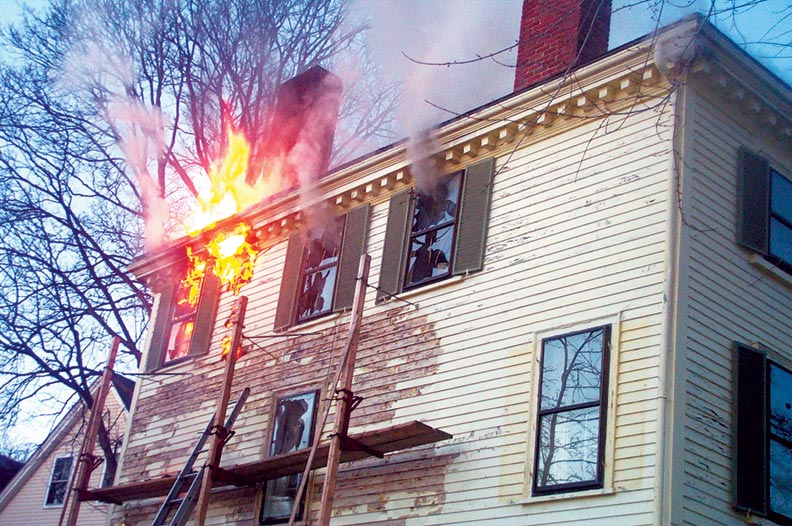
When most people walk into a historic house, they’re looking to step further into the building to explore original details like stained glass, beautiful carved wood moldings, or magnificent parquet floors.
When Chuck Jennings steps into an old house, the first thing he thinks of is how to get out—especially if the structure is filled with the heat, smoke, and darkness of a blazing fire. That’s because Jennings, an avid preservationist who loves old houses (he owns two—a 1918 Foursquare and an 1880s Queen Anne), is a professor of fire science at New York’s John Jay College, and one of the nation’s leading fire safety consultants.
Chuck Jennings, an avid preservationist and one of the nation’s leading fire safety consultants, lives with his family in an 1880s Queen Anne home in upstate New York. (Photo: Tony Seideman)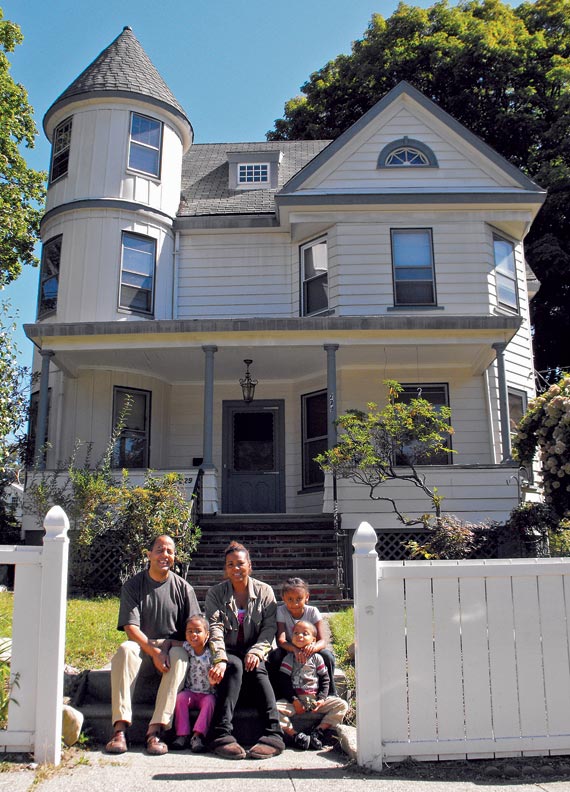
Conversations with Jennings and other fire safety experts present a classic good news/bad news picture of old houses. With their thick plaster walls and usually robust construction, older homes are in many ways safer than modern ones. On the other hand, older houses often sit in poorer neighborhoods, which statistically puts them at greater risk. Many older buildings are also owned by older people, which can mean deferred maintenance, lacking resources, and consequently greater threats.
Perhaps the most important point to consider on fire safety is that in most cases, houses don’t burn down by themselves. Human activities are the overwhelming reason most fires happen. In a way, that’s good news, because people who recognize this can take the necessary steps to protect themselves.
Prevention
Keeping fires from happening is the best way to reduce the risks they present. Jennings says one risk tops all others when it comes to fire safety: the restoration process itself. “The number-one threat to historic homes from a fire-safety perspective is contractors,” Jennings explains. Any time a home’s basic fabric is disturbed, it is vulnerable. But the real risk, says Jennings, comes from working with open flames.
Extension cords are a major fire hazard—especially during the holiday season. Never overload cords or place them beneath rugs. (Photo: Dave Raboin/Istockphoto.com)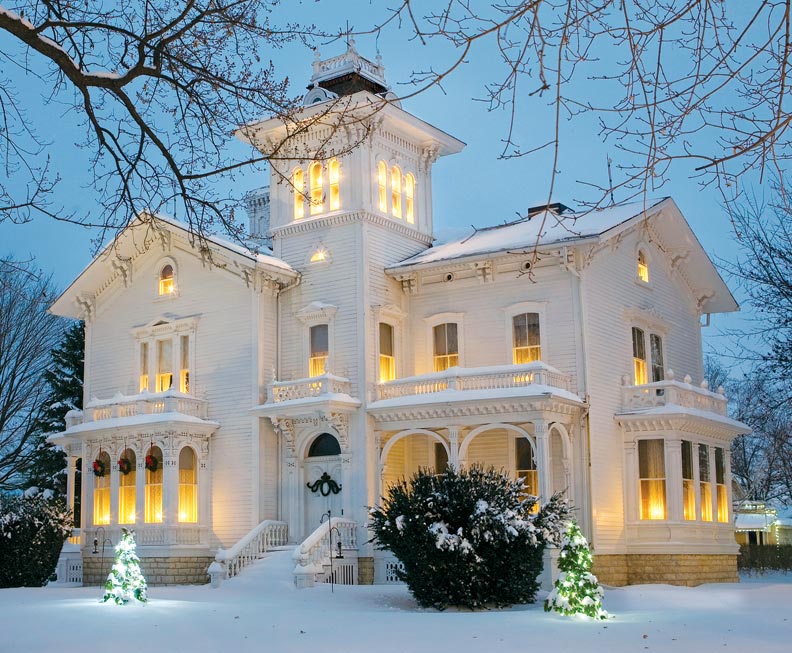
If at all possible, try to avoid this type of work, which is typically concentrated to plumbing and roofing. Stephen Tilly, owner and principal of Stephen Tilly Architects, knows from personal experience how dangerous open flames can be in roof work. “We repaired a fire-damaged roofing job site that started when roofers were working on some flashing with a torch. Old tar paper beneath siding can go up in an instant. The workers didn’t notice that this had happened, and the flames traveled up one side in a wall, burning out an entire room in the house.” Torch-down roofing—a process where a modified bitumen roofing product is installed on a flat roof with a blowtorch—remains popular among many roofers, but it must be applied with extreme caution.
As for plumbing, Jennings advocates a “fire watch” any time an open flame is used. A lookout should observe the site for at least an hour to avoid the “lunch syndrome”—i.e., when a plumber has sweated a joint, goes out to lunch, and comes back to find half the local fire department surrounding a smoking wreck. Jennings isn’t a big fan of heat guns, either, and says using torches to remove paint is just a bad idea.
Establishing strict rules for work on your house—and following them—is vital. “Make sure your sprinkler system isn’t completely turned off,” Tilly advises. “You also can set up additional temporary smoke detection.”
A device that fits over burners, keeping temperatures in check, can prevent fires caused by forgetfulness, common in elderly cooks. (Photo: Courtesy of Safe-T-Element)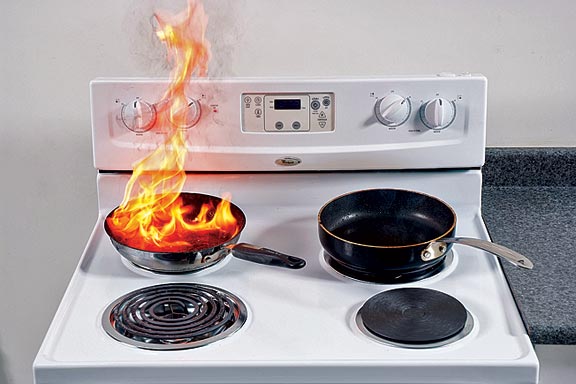
After preservation work, the riskiest activities for historic homes are similar to those for newer ones. Food preparation ranks high among the cause of blazes. Adolescents and the elderly—both prone to distraction and forgetfulness—tend to pose the greatest risk. For adolescents, strict controls and definite rules can help reduce risks. Be clear about when they can cook and how. Rules can help the elderly as well, but technology can also provide an assist. Today there are tools available to increase cooking safety for older chefs, such as systems that keep pots and their contents from getting hotter than the ignition point of oil.
While cooking causes the most fires, blazes related to smoking are the most deadly. Once again, a few simple rules can significantly reduce risks. Never smoke in bed or when you’re sleepy. Always use a big ashtray, since larger ashtrays will contain cigarettes better and are less likely to spill. There are fire-resistant cigarettes on the market that put themselves out if they are not inhaled within a set period of time, so if you do want to smoke, you can avoid setting conflagrations. Or, best of all, you can quit.
Improperly vented clothes dryer vents can cause fires. (Photo: Jeremy Stanley)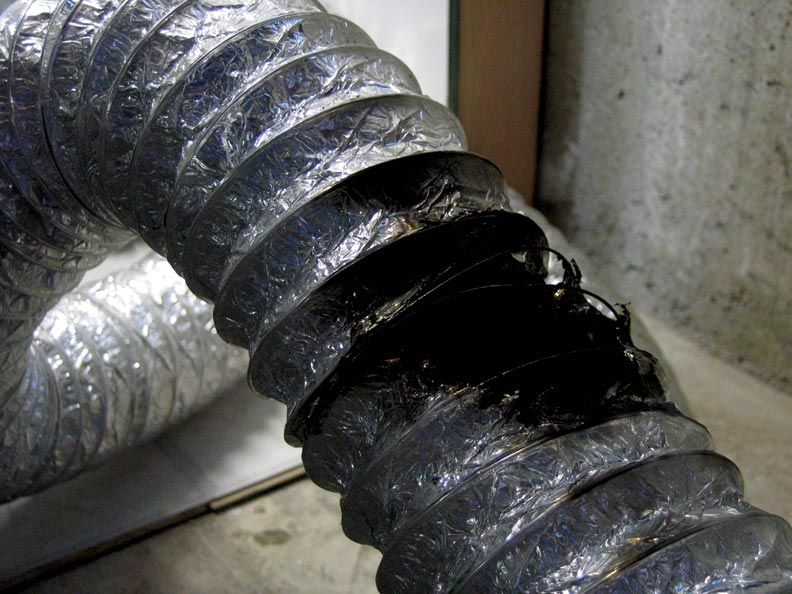
Once human error is reduced, the next step is to examine the fabric of the house and the condition of its appliances. Bad wiring is a common cause of fire in old houses, Jennings says. Knob and tube electrical systems, when in good condition and not overloaded, are fundamentally safe. But many older homes have been subject to an endless variety of bad electrical work over the years; an inspection is always warranted.
Water leaks can cause fires by creating short circuits as moisture hits wires and electrical devices. Old appliances can be risks, as can improperly vented dryers. Extension cords are an all-too-common source of disaster. Use them with caution; make sure they are appropriate for the task at hand. Putting an extension cord beneath a carpet is incredibly dangerous, and has caused damage or complete destruction to many a historic structure.
Chimneys and wood stoves are another risk. Inspect chimneys annually, especially if they are connected to a wood stove; creosote buildup is a fire hazard mitigated through regular cleaning. Use adequate fire protection anywhere a wood stove is set; check your manual or call the manufacturer for guidelines, which vary by stove. You may need a permit to install a stove; not getting one could create problems with your homeowner’s insurance. Even regular furnaces should never stand alone—they should be surrounded by some type of fire-resistant enclosure, even if only drywall. Keep materials and debris a safe distance away from furnaces as well, at least 36″.
Protection
Inspecting chimneys for damage—and keeping them clean—helps prevent fires. (Photo: Nathan Winter)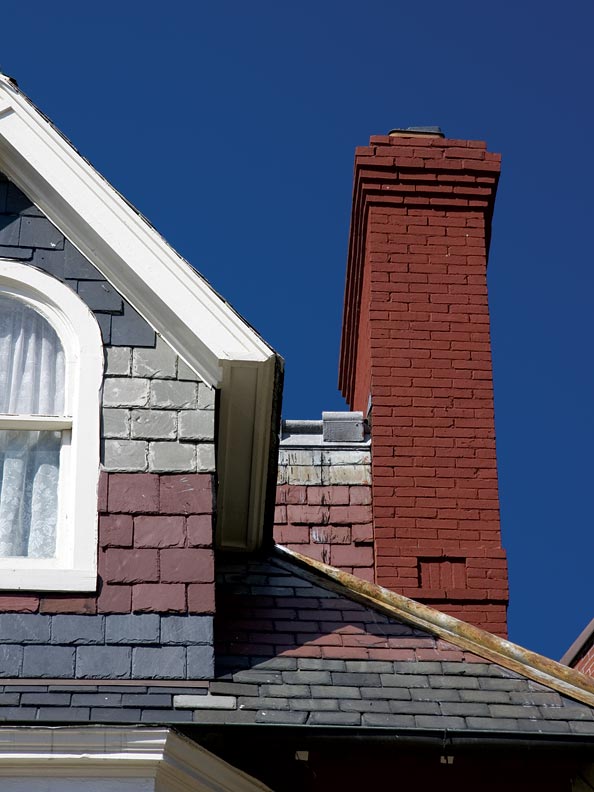
Because he’s a thoughtful, careful, demanding purchaser, Jennings’ old homes didn’t need many alterations. But one thing he installed immediately was a hard-wired, battery-backup smoke alarm system, which will keep the house safe even during brief electrical interruptions. Every place where people sleep should have a smoke alarm, he says. Kitchens should have an alarm, too, but it should be placed far enough away from cooking surfaces to ensure it isn’t constantly triggered, which can make it a nuisance and tempting to disconnect.
When it comes to alarm systems, Jennings recommends following the National Fire Protection Association’s NFPA 72 standard. While wireless installations can reduce the cost and damage of installation, hard-wired systems do better when it comes to power outages and reliability. In hard-wired systems, all the alarms are connected to each other and to a central station, while wireless systems use small radio transmitters to communicate with each other and a central locale. “Wired is always better,” says Tilly, and many building codes require hard-wired installations.
Sprinklers are another useful safety feature, albeit an expensive one. But costs—and damage from installations on historic structures—are far less today than they once were. Major innovations include the use of heat-resistant, flexible plastic pipes (PEX tubing) and high-pressure systems that produce a mist that can suffocate a fire without destroying historic materials. In many areas, sprinklers are only necessary at exit routes and high-risk areas to meet code demands and significantly improve safety. In recent years, states have adopted the International Building Code (IBC), but many have modified the overall regulations to meet the needs of their localities and regions. Check with local authorities before moving forward.
Most experts agree that every historic home should have fire extinguishers in kitchens and anywhere flames are likely to occur. Jennings himself isn’t a fan of extinguishers, because he’s seen homeowners add to disasters by trying to fight blazes themselves. Generally speaking, unless you are trained in the use of extinguishers and have the temperament to keep calm during an emergency, your time is better spent evacuating than attempting to fight fire with a handheld extinguisher.
The Brokaw-McDougall House in Tallahassee, Florida, installed a fire sprinkler system with flexible PEX tubing during renovation. (Photo: Courtesy of MLD Architects)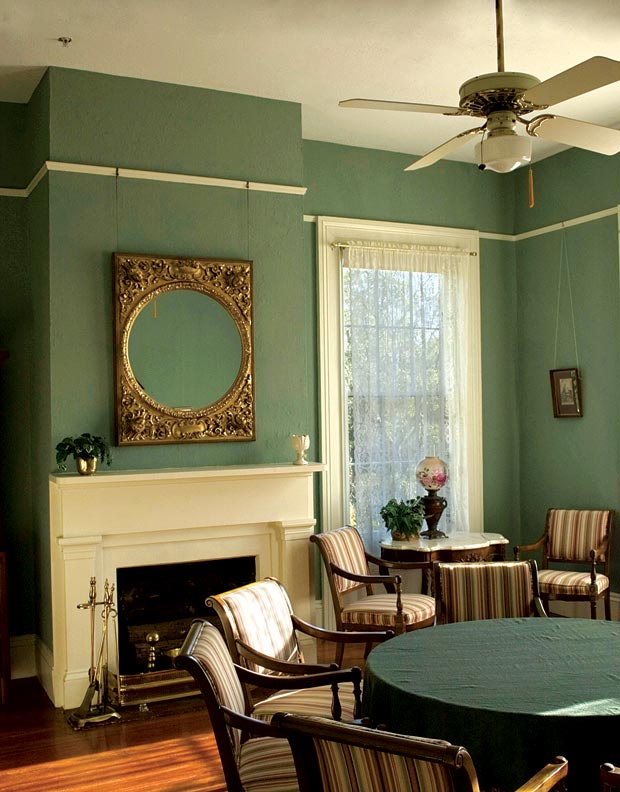
Planning
Unfortunately, despite meticulous preparation, fires can still happen. But some basic planning can make a huge difference in saving lives and preventing injuries if or when a fire occurs.
If you have an historic preservation society, get them talking with the local fire department about minimum-impact firefighting, says Tilly, who recently had to deal with the impact of two fires—one in a community where preservation was a priority, and one where it was not. Though the fires were similar, the damage was exponentially greater in the town where preservation wasn’t high on the radar. It’s possible to fight fires without taking a house apart, and there’s nothing wrong with asking fire departments to use this approach.
Once a serious blaze starts, you have just one to three minutes to safely get out. Always keep low; heat rises, and temperatures at head height can scorch lung tissue. In addition, smoke from a house fire is full of potentially lethal toxins and gases—another reason to stay close to the ground.
In a significant fire, the smoke is usually so thick that visibility rapidly drops to a matter of inches. That’s why some people get lost—and die—within feet of safety. “Fire is destructive, and it’s permanent,” Jennings says. But it isn’t inevitable, especially if you invest a relatively small amount of time and energy in preparation, prevention, and planning for escape.







